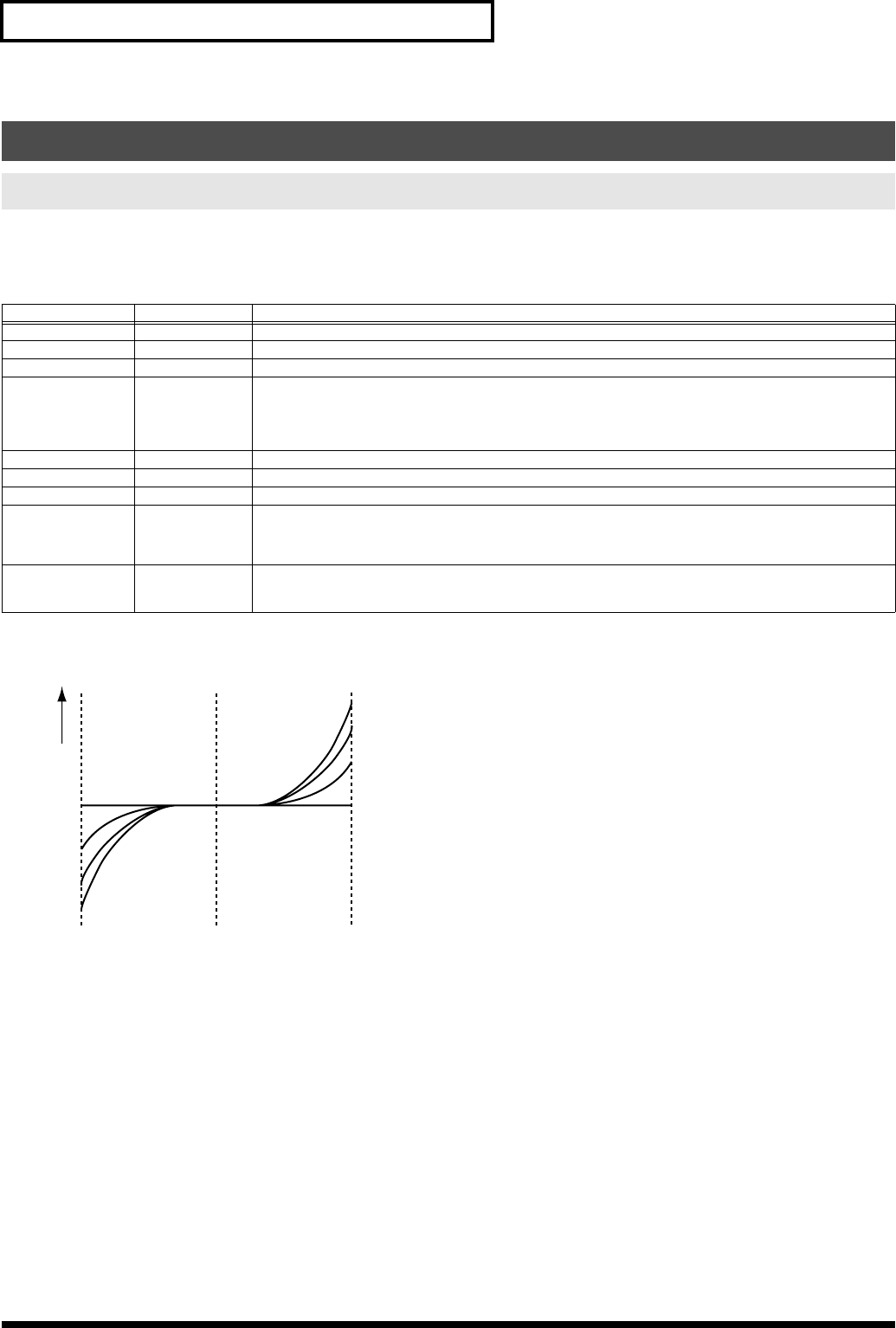
34
Creating a Patch
GENERAL
Parameter marked with a “
★
” can be controlled using specified MIDI messages
(Matrix Control, p. 44)
Stretched Tuning
fig.06-011.e
Functions of Patch Parameters
Settings Common to the Entire Patch
Parameter Value Description
Patch Category Refer to p. 26. Type (category) of the patch
Patch Level 0–127 Volume of the patch
Patch Pan L64–0–63R Left/right position of the patch
Patch Priority LAST, LOUDEST How notes will be managed when the maximum polyphony is exceeded (128 voices)
LAST:
The last-played voices will be given priority (Notes will be turned off in order, beginning with the first-
played note.)
LOUDEST:
The loudest voices will be given priority (Notes will be turned off, beginning with the lowest-volume
voice.)
Octave Shift -3– +3 Pitch of the patch’s sound (in units of an octave)
Patch Coarse Tune
★
-48– +48
Pitch of the patch’s sound (in semitones, +/- 4 octaves)
Patch Fine Tune -50– +50 Pitch of the patch’s sound (in 1-cent steps; one cent is 1/100th of a semitone)
Stretch Tune Depth OFF, 1–3 Stretched tuning (a system by which acoustic pianos are normally tuned, causing the lower range to be lower and the
higher range to be higher than the mathematical tuning ratios would otherwise dictate)
OFF:
Equal temperament
1–3:
Higher settings will produce the greater difference in the pitch of the low and high ranges.
Analog Feel 0–127 Depth of 1/f modulation (a pleasant and naturally-occurring ratio of modulation that occurs in a babbling brook or
rustling wind)
* You can simulate the natural instability characteristic of an analog synthesizer by adding this “1/f modulation.”
1
2
3
OFF
2
1
OFF
3
High note range
Pitch difference from
equal temperament
Parameter value
Low note range
JUNO-G_e.book 34 ページ 2006年2月13日 月曜日 午後2時44分


















